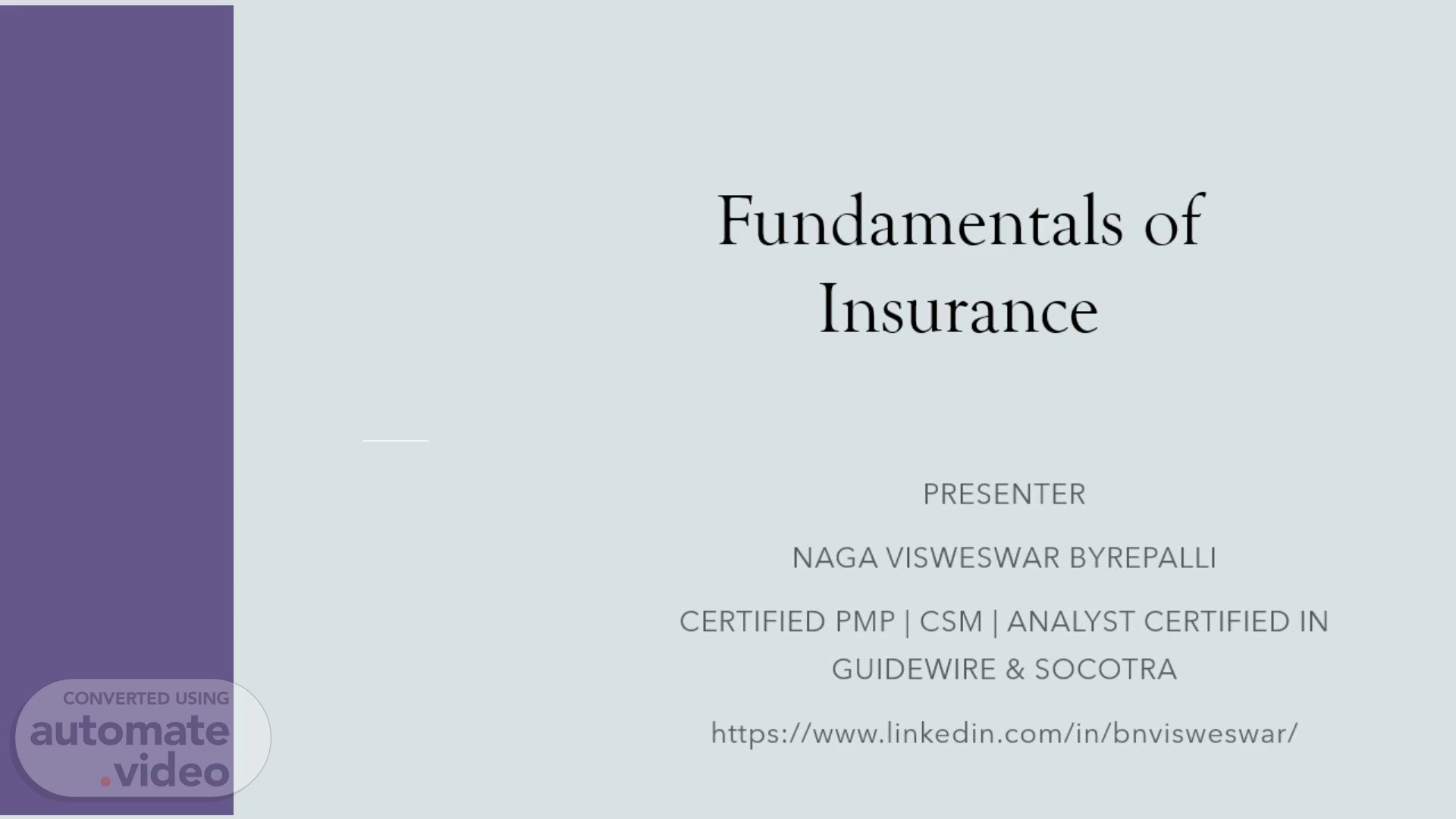
Page 1 (0s)
[Audio] Today we discuss about Fundamentals of Insurance.
Page 2 (11s)
[Audio] Agenda of Topics we are going to cover RISK DEFINITIONS RISK MANAGEMENT COMPONENTS OF RISK PERIL & HAZARD CATEGORIES & FEATURES OF INSURABLE RISKS REASON FOR BUYING INSURANCE COMPULSORY INSURANCE CLAIMS HANDLING.
Page 3 (30s)
Introduction. With over 17 years of experience in IT and the insurance market, I will share a summary of London Insurance Knowledge that can enhance your skills and help you quickly certify with the Chartered Insurance Institute (CII) for multiple opportunities in 2024. Below is a quick brief on the changes, and you can watch for daily updates on each chapter summary. The London Market is a unique segment of the U.K. insurance and reinsurance industry, centered in the City of London. It comprises insurance and reinsurance companies, Lloyd's of London syndicates, Marine Protection and Indemnity Clubs (P&I Clubs), and brokers who handle most transactions. This market specializes in international insurance, primarily concentrating on non-life sectors with a strong emphasis on high-exposure risks..
Page 4 (1m 9s)
Risk Definitions. Risk Perception: In everyday life, risk is assessed informally, but significant risks require formal measurement and management. Definition of Risk: Various risks are associated with owning a building, such as fire, flood, or injury to people. Insurance transfers these risks to an insurer in exchange for a premium, where the insurer covers future unknown costs. Other Meanings of Risk: In insurance, the term "risk" can denote the peril being insured against (such as fire or collision), the subject matter of the insurance (like a factory, ship, or potential liability), or the insurance coverage itself, including the property involved, the range of contingencies, and the scope of the required coverage. Attitude to Risk: Individuals and businesses have different risk tolerances, ranging from risk-seeking to risk-averse, influencing their approach to risk management..
Page 5 (1m 53s)
Risk Management Process. Definition: The process involves identifying, analyzing, and controlling risks threatening an enterprise's assets or earning capacity. Risk Identification: Companies identify potential risks, some of which may be insurable. Risk Analysis: Past data is examined to evaluate risks. Risk Control: Measures are taken to control, reduce, or eliminate risks, balancing costs with potential consequences..
Page 6 (2m 19s)
Components of Risk. Uncertainty: Risk involves uncertainty about the future. Level of Risk: Risks are assessed by their frequency (how often) and severity (impact)..
Page 7 (2m 49s)
Types of Risks. Financial vs. Non-Financial: Insurable risks must be financially measurable. Pure vs. Speculative Risks: Pure risks (possible loss but no gain) are insurable; speculative risks (potential for gain or loss) are not. Particular vs. Fundamental Risks: Fundamental risks (e.g., war) are often uninsurable due to their widespread impact..
Page 8 (3m 19s)
Pooling of Risk. Law of Large Numbers: Large numbers of similar risks allow insurers to predict losses accurately. Equitable Premiums: Premiums should be fair and proportionate to the risk..
Page 9 (3m 38s)
Compulsory Insurance in UK. Certain insurances, like motor and employer's liability, Professional Indemnity, dangerous wild animals/dogs are legally required to ensure funds for compensation and maintain public trust..
Page 10 (4m 0s)
Thank you. Disclaimer: This video is provided for informational purposes only and is free of charge. It offers a summary, so please explore the topics further for more detailed information..